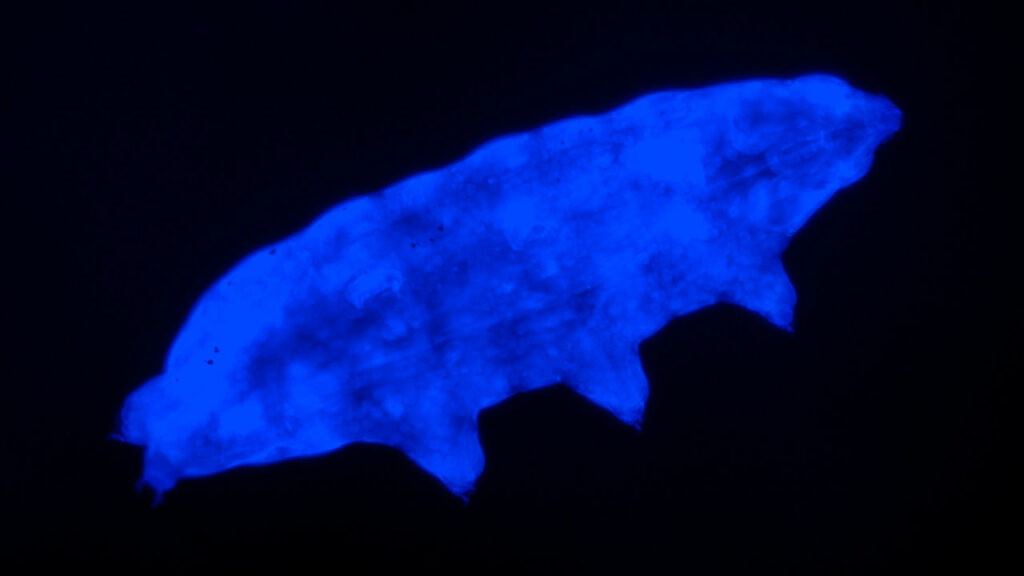
Struck by menacing ultraviolet radiation? Water bear don’t care. According to an intriguing new study, water bears, also known as tardigrades or moss piglets, have a newly discovered ability that allows them to survive in some of the most extreme environments in the universe — even in outer space. When they’re hit by UV light, these microscopic creatures absorb the radiation with a fluorescent substance, which emits back blue light.
This striking display of extreme survival was discovered in a new tardigrade species, dubbed Paramacrobiotus BLR, by researchers from the Indian Institute of Science. As a stroke of luck, the tardigrades were first discovered in moss growing on the walls of the campus.
The most extreme organisms on Earth
Tardigrades are the most indestructible known complex organism on Earth, and perhaps the cutest of all microorganisms.
We know that they can survive without water for 10 years, in extreme pressures and temperatures, and in outer space. In 2016, Japanese cryobiologists showed that water bears can even come back from the dead. When some of these microscopic eight-legged creatures were thawed after being frozen for 30 years, the researchers were stunned to find that the defrosted creatures were still alive. What’s more, they could even manage to reproduce with one laying 19 eggs of which 14 successfully hatched.
To pull off these death-defying feats, tardigrades employ a couple of tricks. When faced with the prospect of annihilation, either due to lack of food or due to exposure to absolute zero temperatures, the water bear essentially dries out and retracts its head and its eight legs. It then enters a deep state of suspended animation that closely resembles death. Its metabolism slows to 0.01% of the normal rate and the body becomes almost devoid of water.
Additionally, the reddish-brown Paramacrobiotus tardigrades have another ace up their sleeve. When the Indian researchers exposed these tardigrades to 1 kilojoule per square meter of UV light — enough to kill bacteria and roundworm after just 5 minutes — they all survived. Even after the radiation dose was upped four times, about 60% of the reddish-brown bears still lived for more than 30 days.
In order to learn more about this strain of Paramacrobiotus, the researchers examined tardigrade samples with an inverted fluorescence microscope. Much to their surprise, under UV Light, the reddish tardigrades appeared blue due to fluorescent pigments located under the animals’ skin.
Not all tardigrades seem to have this ability. When Hypsibius exemplaris tardigrades were exposed to UV light for 15 minutes, all died within 24 hours.
The researchers also extracted some of these fluorescent pigments and sprayed them on Hypsibius exemplaris tardigrades and several earthworms to see if the UV-protection rubs off them. The creatures that were coated with the pigments survived almost two times better than those without the shielding. Bearing in mind the very hot summer days in southern India, the Paramacrobiotus tardigrades likely evolved the UV-shielding as a local adaptation.
The findings were reported in the journal Biology Letters.









